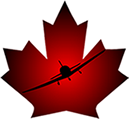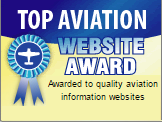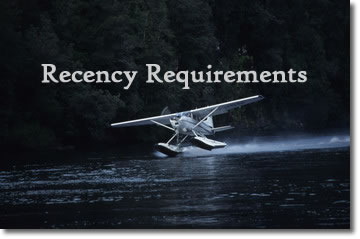 |
|
As a CFI and operator of a flight school, I speak with a steady stream of pilots wanting to know what they need to do to “get flying again” after an absence from aviation. I had a great conversation a few days back with a man who had earned his Commercial Pilot License back in the late 1970’s but hadn’t been in a light aircraft for the past 18 years. After we returned from a local flight he said, through a great big smile, “I guess you don’t ever forget how to fly; you just get a bit rusty around the edges.” Being familiar with recency requirements is a good plan for all of us, even if we think of ourselves as active pilots. It is important to be aware of and to ensure we are meeting the legal requirements to act as pilot-in-command of a Canadian registered aircraft. Many active pilots are quite surprised to find that, despite flying on a regular basis, they do not meet the legal recency requirements. CARS 401.05, in its majesty, spells out the requirements to maintain, or regain, our currency. The requirements are specified for time periods of six-months, two years and five years. The five-year recency requirement has been in place for years; the two-year requirement was introduced with the CARS in October 1996. To remain current to carry passengers, within six months of a flight a pilot must have completed at least five takeoffs and landings in the same category and class of aircraft he or she will be flying. Night landings and takeoffs satisfy both the day and nighttime requirement. Day takeoffs and landings are valid for flights during daytime only. IFR recency has its own particular requirements. An instrument rating is valid for a period of 24 months, but 12 months following a flight test, the six-month rules become active. So, within six months preceding an IFR flight, a pilot must have logged at least six hours of instrument time and completed six instrument approaches to Canadian Air Pilot minimums. If you are an aircraft renter, it is important to remember that particular flight schools or other aircraft rental organisations may have their own recency requirements, normally more constraining that those required by the CARS. Our school, for example, requires a 60-day recurrency. Following an initial check out with an instructor, unless you have flown one of our aircraft of the type you intend to fly within the last 60 days, we require a fresh check out. We have several pilots, some very experienced, who will come in once every month or six weeks, take an aircraft up for an hour, enjoy a local flight and some circuits to maintain their currency and proficiency. The two-year recency requirement that came into effect in 1996 is something, I suspect, many pilots have not fully come to grips with. CARS 401.05(2)(a), lists a number of options for meeting the requirement. A pilot may, for example, complete a flight review with a person holding a flight instructor rating valid for the same category of aircraft that will be flown. A flight review basically covers the same items included on a flight test for the license held by the pilot. Having satisfactorily completed the flight review, a pilot will have his or her logbook endorsed by the instructor stating that the skill requirements of the license have been met. Attendance at a Transport Canada safety seminar with the appropriate logbook endorsement enables a pilot to meet the two-year recency requirement, as well. These seminars, I can say from personal experience, are excellent and, normally, very enjoyable. They even supply donuts and coffee, sometimes. It gives us a chance to meet with other pilots from our area to hear about and discuss safety issues and to be updated on current practices and areas of concern: a very worthwhile activity. Pilots may also fulfil their two-year recency by completing a recurrent training program designed to update their knowledge of human factors, meteorology, flight planning and navigation, and aviation regulations. Completing and retaining for inspection the self-paced study program provided through the Canada Aviation Safety Newsletter, completing the requirements for a license renewal or a new rating, or completion of a written exam for a permit, license or rating will also meet the two year recency requirements. To comply with the five-year recency requirement a pilot must have acted as pilot-in-command or co-pilot of an aircraft within the five years preceding the flight. He or she may also, within 12 months preceding the flight, have completed a flight review as described in CARS 421.05 including completion of the appropriate exam. Pilots who have not acted as PIC or copilot of a two pilot aircraft within a five-year period must successfully re-write the PSTAR exam and complete a flight review with a qualified flight instructor to regain their currency. Of course, a valid Medical Certificate or License Validation Certificate (LCV) is also required. Your pilot license, unless rescinded by Transport Canada, is valid for life. You may not, however, exercise the privileges of that license unless you hold a valid LCV and are current. If you have been away from aviation for a period of time and are thinking about getting back in the air, good for you. There is absolutely nothing in the world like the view from the left seat of an aircraft. Come on in and speak with the CFI or another knowledgeable instructor at your favourite flight school. He or she can review your logs with you and let you know exactly what you will need to do to regain your currency status and start flying again.
|



